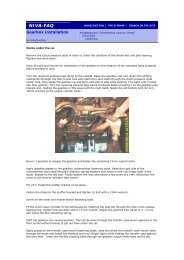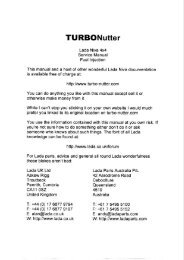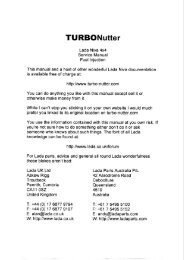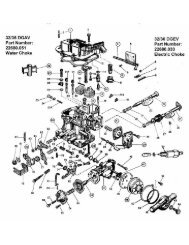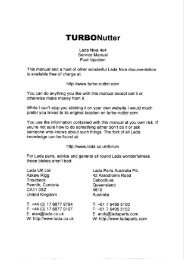WEBER CARBURETOR TROUBLESHOOTING GUIDE - Niva Manuals
WEBER CARBURETOR TROUBLESHOOTING GUIDE - Niva Manuals
WEBER CARBURETOR TROUBLESHOOTING GUIDE - Niva Manuals
You also want an ePaper? Increase the reach of your titles
YUMPU automatically turns print PDFs into web optimized ePapers that Google loves.
<strong>WEBER</strong> <strong>CARBURETOR</strong><br />
<strong>TROUBLESHOOTING</strong> <strong>GUIDE</strong><br />
FOR YOUR SAFETY<br />
Remember ! A Clean engine will make all work easier, accurate, and safer.<br />
ALWAYS:<br />
Use new hose clamps on fuel hoses.<br />
Replace any cracked or missing hoses.<br />
(fuel, vacuum or coolant)<br />
Label any hose or wire before removing.<br />
Use an insulated connector for any wire.<br />
NEVER:<br />
Allow any dirt in the carburetor.<br />
Run the engine without proper<br />
filtration (Air and Fuel Filters).<br />
Allow fuel to leak or spill<br />
Damage any gasket surfaces<br />
Over tighten Jets or levers.<br />
1. ELECTRICAL SYSTEM<br />
To make sure that the ignition system is working correctly do steps 1 A - 1C<br />
with the ignition on.<br />
IMPORTANT NOTE<br />
Make sure that the battery is fully charged with no<br />
corrosion present on the terminals.<br />
A. Test the fuse for the ignition/charging circuit:<br />
If you do not have 12 volts at either side if the fuse, replace fuse.<br />
B. Check static ignition timing:<br />
Make sure that you do not have excessive free play at the<br />
distributor shaft.<br />
C. See if the distributor is 180 degrees out of time:<br />
Do a comparison to the cam timing or by reversing opposite pairs of<br />
ignition wires at the distributor cap.<br />
2. FUEL DELIVERY<br />
To make sure that the quality and supply of fuel to the carburetor is correct,<br />
please so steps 2A - 2I . In our experience we have seen that fuel contaminated<br />
with water, dirt or rust is the major cause of carburetor problems. Use fuel as<br />
fresh as possible.<br />
IMPORTANT NOTE On vehicles equipped with electric fuel pumps. Most are not<br />
powered with out the engine running or starter engaged.<br />
A. Test the fuel flow at the carburetor by disconnecting the fuel supply hose<br />
and directing the fuel flow into a small dry, clean can when the fuel pump is<br />
activated.<br />
IMPORTANT NOTE<br />
DO NOT ALLOW ANY CHANCE OF A SPARK DISCONNECT<br />
THE PRIMARY WIRE(S) )usually a small 16 Gauge wire)<br />
THAT CONNECTS THE GROUND (-) SIDE TERMINAL OF THE<br />
COIL TO THE DISTRIBUTOR ( OR SPARK BOX, IF SOLID<br />
STATE IGNITION).<br />
If fuel flow is adequate go to step 2 E<br />
If fuel flow is not adequate go to step 2B<br />
Page 2





